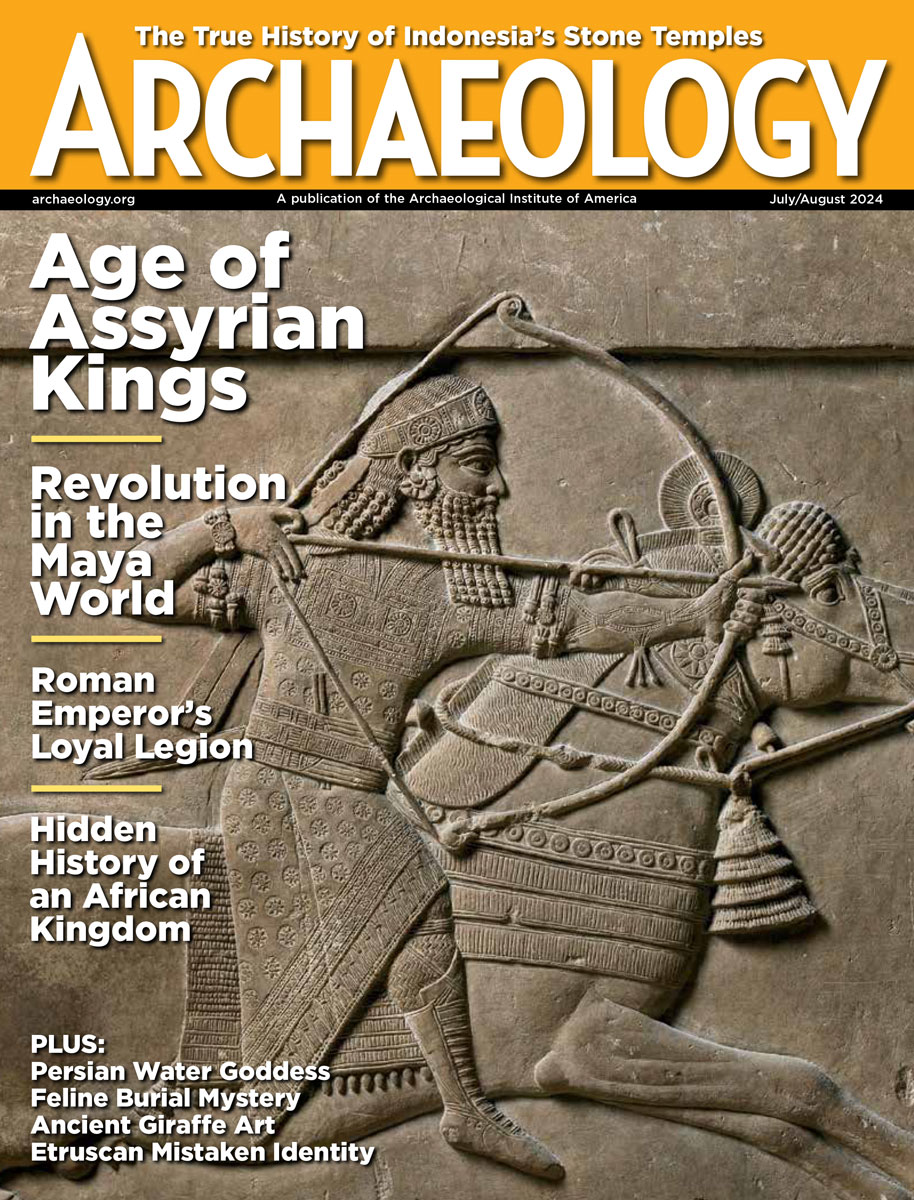Wednesday, January 11
January 11, 2012
Researchers have found traces of nicotine inside a 1,300-year-old Maya vessel that had been labeled as a home for tobacco. “Textual evidence written on pottery is often an indicator of contents or of an intended purpose; however, actual usage of a container could be altered or falsely represented,†explained Jennifer Loughmiller-Newman of the University of Albany.
A jade-bead necklace dating to the Late Preclassic period has been discovered in a ceremonial building at Guatemala’s Maya site of Tak’alik Ab’aj.
The wreckage of the British submarine HMS Olympus has been identified in the Mediterranean Sea. The sub had been trying to get past a German and Italian blockade of Malta when it struck a mine in 1942. Only nine of the 98 men aboard the Olympussurvived.
Staff members at the Chateau of Versailles found a letter written during World War II that had been hidden in a secret drawer in a desk that belonged to King Louis XV. It had been written by a restorer who finished working on the desk just as Paris was liberated from the Nazis in 1944.
George Wingard of the Savannah River Archaeological Research Program is making a film about an enslaved man known only as Dave, who crafted stoneware at potteries in South Carolina. “These pots were made to be used—to keep meat, lard, or butter—so they were utilitarian,†he said. The documentary will be used for educational and outreach purposes.
- Comments Off on Wednesday, January 11
Tuesday, January 10
January 10, 2012
The nine-year-long restoration of the so-called Hallaton Helmet has been completed at the British Museum. The ceremonial Roman cavalry helmet, which dates to the time of the Roman invasion of Britain, was unearthed in Leicestershire.
Some 3,000 cave paintings have been discovered in central Mexico spread out over 40 rock art sites. They range in age from nearly 2,000 years old to the twentieth century.
Archaeologist Kathy Deagan responds to a recent article in The St. Augustine Record which promoted two television shows about treasure hunting  in America’s oldest permanent European settlement. “Neither of those programs seems to have any clue about how history is revealed and acknowledged,†she writes.
The remains of two giant land tortoises found in Florida’s Little Salt Spring are being examined for butchering marks. “That actually would represent the oldest traces of human activity in the Southeast United States,†explained John Gifford of the University of Miami. None of the tools recovered so far in the spring are more than 10,000 years old.
A ceramic stamp engraved with an image of the Temple Menorah has been uncovered by the Israel Antiquities Authority at the site of Horbat Uza. Researchers think the stamp was used to mark kosher bread.  Here’s more information on the stamp.
Archaeologists are interested in protecting the Apollo landing sites on the Moon from damage by future spacecraft. “I think it’s humanity’s heritage,†said Beth L. O’Leary of New Mexico State University.
- Comments Off on Tuesday, January 10









